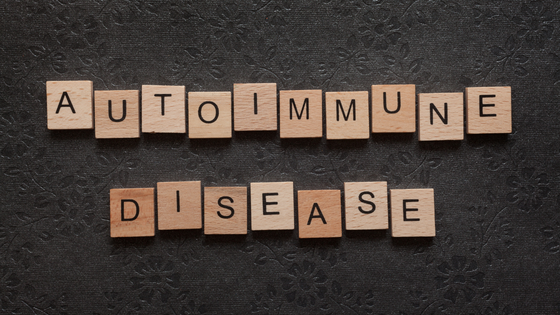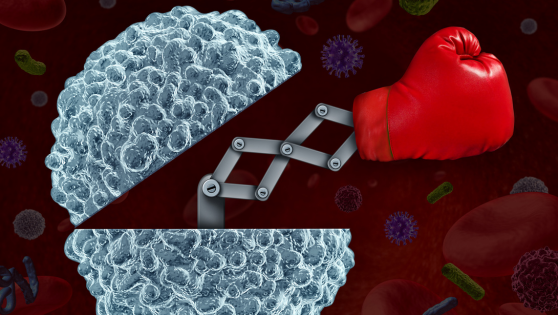Introduction
Autoimmune disease is more common than many realize, affecting millions of people worldwide. These conditions can significantly impact daily life, often causing chronic pain, fatigue, and a range of other symptoms that can be debilitating. Despite their prevalence, many individuals who are diagnosed with conditions like Multiple Sclerosis (MS) or Lupus may not realize these are autoimmune diseases. They simply know the name of their diagnosis without understanding the broader category it falls under.
This lack of awareness can be a barrier to effective management and treatment. Understanding autoimmune diseases as a collective group is crucial, not only because it provides a better understanding of one’s health condition but also because individuals can have more than one autoimmune disease, a phenomenon known as polyautoimmunity.
In this blog post, we aim to educate you on the 12 most common autoimmune diseases. We’ll provide key details on their symptoms, how they are diagnosed, and the available treatment options. By increasing awareness, we hope to empower you with knowledge that can lead to better health outcomes and improved quality of life.
Understanding Autoimmune Disease
What Is Autoimmune Disease?
Autoimmune disease occurs when the body’s immune system, which typically protects us from infections and illnesses, mistakenly attacks its own healthy cells and tissues. Think of the immune system as a vigilant security team. In a healthy body, this team identifies and neutralizes harmful invaders like bacteria and viruses. However, in someone with an autoimmune disease, this security team becomes confused and targets the body’s own cells, leading to inflammation and tissue damage.
How Do Autoimmune Diseases Occur?
The exact cause of autoimmune disease remains a mystery, but researchers believe a combination of genetic, environmental, and lifestyle factors play a role. Share on XImagine your immune system has a set of instructions or a playbook it follows. In autoimmune disease, this playbook gets rewritten or misinterpreted, causing the immune system to attack normal, healthy tissues as if they were threats. This miscommunication can affect various parts of the body, leading to a wide range of symptoms and health issues.
Prevalence of Autoimmune Diseases
Autoimmune diseases are more common than you might think. Globally, they affect millions of people, with some estimates suggesting that up to 5% of the world’s population is living with an autoimmune condition. In the United States alone, approximately 24 million people are diagnosed with an autoimmune disease. These conditions are more prevalent in women, who make up about 80% of those affected.
Understanding these diseases and their impact on so many lives underscores the importance of awareness, early diagnosis, and effective management. By staying informed, we can better support ourselves and our loved ones on the journey to health and healing.
The 12 Most Common Autoimmune Diseases
1. Rheumatoid Arthritis (RA)
Overview: Rheumatoid Arthritis (RA) is a chronic inflammatory disorder that primarily affects the joints. Unlike osteoarthritis, which results from wear and tear, RA is an autoimmune condition where the immune system mistakenly attacks the lining of the joints. This leads to inflammation, which can cause joint damage if left untreated.
Symptoms: The hallmark symptoms of RA include swelling, pain, and stiffness in the joints, particularly in the hands, wrists, and knees. These symptoms often occur symmetrically, meaning they affect both sides of the body equally. Other symptoms may include fatigue, fever, and loss of appetite.
Diagnosis: Diagnosing RA involves a combination of blood tests and imaging tests. Blood tests can detect specific markers of inflammation and antibodies associated with RA, such as rheumatoid factor (RF) and anti-cyclic citrullinated peptide (anti-CCP). Imaging tests, such as X-rays, MRI, or ultrasound, help visualize joint damage and inflammation.
Treatment: Treatment for RA focuses on controlling symptoms and preventing joint damage. This typically includes medications such as nonsteroidal anti-inflammatory drugs (NSAIDs), corticosteroids, disease-modifying antirheumatic drugs (DMARDs), and biologics. Physical therapy and lifestyle changes, such as regular exercise and a healthy diet, are also crucial for managing RA.
2. Lupus (Systemic Lupus Erythematosus)
Overview: Lupus, also known as Systemic Lupus Erythematosus (SLE), is a complex autoimmune disease that can affect various parts of the body, including the skin, joints, kidneys, heart, lungs, and brain. Lupus is characterized by periods of flare-ups and remissions, where symptoms can worsen and then improve or disappear.
Symptoms: The symptoms of lupus are diverse and can vary widely among individuals. Common symptoms include fatigue, joint pain, and skin rashes. The hallmark sign of lupus is a butterfly-shaped rash across the cheeks and nose. Other symptoms may involve kidney problems, chest pain, hair loss, and sensitivity to sunlight.
Diagnosis: Diagnosing lupus can be challenging due to its wide range of symptoms. It typically involves a combination of blood tests, such as the antinuclear antibody (ANA) test, and a thorough clinical evaluation by a healthcare provider. Additional tests, including urine tests and imaging studies, may be used to assess organ involvement.
Treatment: There is no cure for lupus, but treatment aims to manage symptoms and prevent organ damage. Medications commonly used include NSAIDs for joint pain and inflammation, corticosteroids to reduce immune activity, antimalarial drugs for skin and joint symptoms, and immunosuppressants to control severe cases. Lifestyle adjustments, such as avoiding sun exposure and managing stress, are also important in managing lupus.
3. Type 1 Diabetes
Overview: Type 1 Diabetes is an autoimmune condition where the body’s immune system attacks and destroys the insulin-producing beta cells in the pancreas. Insulin is a crucial hormone that helps regulate blood sugar levels by allowing glucose to enter cells and be used for energy. Without sufficient insulin, blood sugar levels become dangerously high, leading to a variety of health problems.
Symptoms: The symptoms of Type 1 Diabetes can develop rapidly and may include increased thirst, frequent urination, and unexplained weight loss. Other symptoms might include extreme hunger, fatigue, and blurred vision. If left untreated, high blood sugar levels can lead to serious complications.
Diagnosis: Diagnosing Type 1 Diabetes involves blood sugar tests, including the fasting blood sugar test, the random blood sugar test, and the hemoglobin A1c test, which measures average blood sugar levels over the past two to three months. A positive diagnosis is typically confirmed by elevated blood sugar levels.
Treatment: The primary treatment for Type 1 Diabetes is insulin therapy. Insulin can be administered through injections or an insulin pump. Additionally, managing Type 1 Diabetes involves careful monitoring of blood sugar levels, a balanced diet, regular physical activity, and maintaining a healthy weight. Education and support from healthcare professionals are essential for effective diabetes management.
4. Multiple Sclerosis (MS)
Overview: Multiple Sclerosis (MS) is an autoimmune disease that affects the central nervous system, which includes the brain and spinal cord. In MS, the immune system attacks the protective sheath (myelin) that covers nerve fibers, causing communication problems between the brain and the rest of the body. Over time, the disease can cause permanent damage to the nerves themselves.
Symptoms: The symptoms of MS can vary widely depending on the extent of nerve damage and which nerves are affected. Common symptoms include numbness or weakness in one or more limbs, fatigue, vision problems (such as partial or complete loss of vision, often with pain during eye movement), tingling or pain in parts of the body, tremor, lack of coordination, and unsteady gait.
Diagnosis: Diagnosing MS typically involves a combination of imaging tests, such as MRI, which can reveal areas of myelin loss (lesions) on the brain and spinal cord. A spinal tap (lumbar puncture) may also be performed to analyze cerebrospinal fluid for abnormalities associated with MS. Other tests may include evoked potential tests that measure electrical activity in response to stimuli.
Treatment: While there is no cure for MS, treatments can help manage symptoms and modify the course of the disease. Medications include disease-modifying therapies (DMTs) that can reduce the frequency and severity of relapses, and other drugs to manage specific symptoms, such as muscle relaxants and medications to reduce fatigue. Physical therapy and lifestyle changes, such as regular exercise and a balanced diet, can also play a vital role in managing MS and maintaining quality of life.
5. Celiac Disease
Overview: Celiac Disease is an autoimmune disorder where the ingestion of gluten—a protein found in wheat, barley, and rye—triggers an immune response that damages the small intestine. This damage impairs the absorption of nutrients, leading to various health issues. Unlike a food allergy, Celiac Disease is a chronic condition that requires lifelong management.
Symptoms: The symptoms of Celiac Disease can vary significantly among individuals. Common symptoms include digestive issues such as diarrhea, bloating, and abdominal pain. Other symptoms may include anemia, due to poor absorption of iron, and fatigue. Some people may experience weight loss, while others might have skin rashes, joint pain, and neurological symptoms such as headaches and numbness.
Diagnosis: Diagnosing Celiac Disease typically involves blood tests to look for specific antibodies that indicate an immune response to gluten. The most common tests are tTG-IgA (tissue transglutaminase antibodies) and EMA (endomysial antibodies). If these tests are positive, a biopsy of the small intestine is usually performed to confirm the diagnosis by checking for damage to the villi—the tiny, finger-like projections that line the small intestine and absorb nutrients.
Treatment: The only effective treatment for Celiac Disease is a strict, lifelong gluten-free diet. This means avoiding all foods and products that contain wheat, barley, and rye. By adhering to a gluten-free diet, individuals with Celiac Disease can manage their symptoms, promote intestinal healing, and prevent further complications. Working with a dietitian experienced in managing Celiac Disease can be incredibly helpful in navigating the gluten-free lifestyle.
6. Hashimoto’s Thyroiditis
Overview: Hashimoto’s Thyroiditis, also known as chronic lymphocytic thyroiditis, is an autoimmune disorder that affects the thyroid gland. In this condition, the immune system attacks the thyroid, leading to inflammation and reduced thyroid function (hypothyroidism). The thyroid gland is crucial for regulating metabolism, and its dysfunction can lead to a variety of health issues.
Symptoms: The symptoms of Hashimoto’s Thyroiditis often develop gradually and can be subtle at first. Common symptoms include fatigue, weight gain, and cold intolerance. Other symptoms may include constipation, dry skin, hair loss, muscle weakness, and depression. As the disease progresses, the thyroid may become enlarged (goiter), causing swelling at the base of the neck.
Diagnosis: Diagnosing Hashimoto’s Thyroiditis involves blood tests to measure thyroid function and check for specific antibodies. Key tests include TSH (thyroid-stimulating hormone), which is typically elevated in hypothyroidism, and free T4 (thyroxine), which is often low. Antibodies against thyroid peroxidase (TPO) and thyroglobulin (Tg) are commonly present in Hashimoto’s and can help confirm the diagnosis.
Treatment: The primary treatment for Hashimoto’s Thyroiditis is thyroid hormone replacement therapy. This usually involves taking a daily synthetic thyroid hormone (levothyroxine) to restore normal hormone levels and alleviate symptoms. Regular monitoring of thyroid function is essential to ensure the dosage remains appropriate. Lifestyle adjustments, such as a balanced diet and regular exercise, can also support overall well-being.
7. Graves’ Disease
Overview: Graves’ Disease is an autoimmune disorder that leads to overproduction of thyroid hormones (hyperthyroidism). The thyroid gland, located in the neck, becomes overactive and produces excessive amounts of hormones that regulate metabolism. This can have widespread effects on various body systems.
Symptoms: Common symptoms of Graves’ Disease include weight loss despite normal or increased appetite, rapid or irregular heartbeat (palpitations), and nervousness or irritability. One of the distinctive signs is Graves’ ophthalmopathy, where the eyes may appear bulging due to inflammation and swelling in the eye muscles. Other symptoms can include sweating, increased sensitivity to heat, and fatigue.
Diagnosis: Diagnosing Graves’ Disease involves several tests. Blood tests measure levels of thyroid hormones (T3 and T4) and thyroid-stimulating hormone (TSH), which is typically low in Graves’ Disease. Tests for thyroid antibodies, such as thyroid-stimulating immunoglobulin (TSI), can also be conducted. Imaging tests, like a thyroid scan or ultrasound, can help assess the size and activity of the thyroid gland.
Treatment: Treatment options for Graves’ Disease aim to reduce the production of thyroid hormones and manage symptoms. These may include:
- Medications: Antithyroid medications (such as methimazole or propylthiouracil) help reduce hormone production. Beta-blockers can manage symptoms like rapid heartbeat.
- Radioactive Iodine Therapy: This treatment involves taking radioactive iodine orally, which destroys overactive thyroid cells and reduces hormone production.
- Surgery: In some cases, part or all of the thyroid gland may be surgically removed (thyroidectomy).
8. Psoriasis
Overview: Psoriasis is a chronic autoimmune condition that affects the skin. It occurs when the immune system speeds up the growth cycle of skin cells, leading to a buildup of cells on the skin’s surface. This results in the formation of thick, red, scaly patches that can be itchy and sometimes painful.
Symptoms: The primary symptoms of psoriasis are red patches of skin covered with thick, silvery scales. These patches can appear anywhere on the body but are commonly found on the elbows, knees, scalp, and lower back. Other symptoms may include dry or cracked skin that may bleed, itching or burning sensations, and thickened or ridged nails.
Diagnosis: Psoriasis is usually diagnosed through a physical examination of the skin. In some cases, a skin biopsy may be performed to rule out other conditions and confirm the diagnosis. During a biopsy, a small sample of skin is taken and examined under a microscope.
Treatment: Treatment for psoriasis aims to stop the skin cells from growing so quickly and to remove scales. Common treatments include:
- Topical Treatments: Creams and ointments applied directly to the skin can reduce inflammation and slow down the growth of skin cells. These may include corticosteroids, vitamin D analogues, and retinoids.
- Phototherapy: Exposure to ultraviolet (UV) light under medical supervision can help slow the growth of skin cells.
- Systemic Medications: For more severe cases, oral or injected medications that affect the entire body may be used. These include biologics and immunosuppressants.
9. Inflammatory Bowel Disease (IBD)
Overview: Inflammatory Bowel Disease (IBD) is a term that encompasses two main conditions: Crohn’s disease and Ulcerative colitis. Both are chronic diseases characterized by inflammation of the gastrointestinal (GI) tract. Crohn’s disease can affect any part of the GI tract from the mouth to the anus, often in a patchy distribution. Ulcerative colitis, on the other hand, is limited to the colon and rectum and usually affects these areas continuously.
Symptoms: Common symptoms of IBD include abdominal pain, persistent diarrhea, and weight loss. Other symptoms may include fatigue, reduced appetite, and rectal bleeding. The severity and frequency of symptoms can vary, with periods of active illness (flares) followed by periods of remission.
Diagnosis: Diagnosing IBD typically involves a combination of endoscopy and imaging tests. Endoscopic procedures, such as colonoscopy or sigmoidoscopy, allow doctors to view the inside of the GI tract and take biopsies. Imaging tests like CT scans, MRIs, and intestinal ultrasounds can provide detailed pictures of the intestines and help identify areas of inflammation.
Treatment: Treatment for IBD aims to reduce inflammation, manage symptoms, and maintain remission. This may include:
- Medications: Anti-inflammatory drugs (such as corticosteroids and aminosalicylates), immune system suppressors (like azathioprine and biologics), and antibiotics.
- Diet Changes: Specific dietary adjustments and nutritional supplements can help manage symptoms and prevent malnutrition.
- Surgery: In severe cases or when medications are ineffective, surgery may be necessary to remove damaged portions of the GI tract.
10. Sjögren’s Syndrome
Overview: Sjögren’s Syndrome is an autoimmune disorder that primarily affects the body’s moisture-producing glands. It leads to dryness in various parts of the body, especially the eyes and mouth. Sjögren’s can occur on its own (primary Sjögren’s) or in conjunction with other autoimmune diseases, such as rheumatoid arthritis or lupus (secondary Sjögren’s).
Symptoms: The hallmark symptoms of Sjögren’s Syndrome are dry eyes and dry mouth. Dry eyes can cause a gritty or burning sensation, while dry mouth can lead to difficulty swallowing, speaking, or tasting. Other symptoms may include joint pain, swelling, and fatigue. Some individuals might also experience dryness in other areas, such as the skin, nose, and throat.
Diagnosis: Diagnosing Sjögren’s Syndrome involves a combination of blood tests and eye tests. Blood tests can detect specific antibodies associated with Sjögren’s, such as anti-SSA (Ro) and anti-SSB (La). Eye tests, like the Schirmer’s test, measure tear production, while a salivary gland biopsy may be conducted to look for inflammatory cells.
Treatment: While there is no cure for Sjögren’s Syndrome, treatments focus on relieving symptoms and preventing complications. These may include:
- Medications: Drugs like pilocarpine and cevimeline can help stimulate saliva production. Anti-inflammatory drugs and immunosuppressants may be used to manage systemic symptoms.
- Artificial Tears and Saliva Substitutes: Over-the-counter or prescription products can help alleviate dryness.
- Lifestyle Changes: Staying hydrated, using a humidifier, and practicing good oral hygiene can help manage symptoms.
11. Ankylosing Spondylitis (AS)
Overview: Ankylosing Spondylitis (AS) is a type of inflammatory arthritis that primarily affects the spine, although it can also impact other joints and ligaments. The inflammation causes the vertebrae to fuse over time, leading to a loss of flexibility and a hunched-forward posture. In severe cases, this fusion can make breathing difficult due to reduced expansion of the chest.
Symptoms: The most common symptoms of AS include chronic back pain and stiffness, particularly in the lower back and hips. These symptoms often worsen after periods of inactivity and improve with exercise. Other symptoms may include pain and swelling in other parts of the body, such as the shoulders, knees, and heels. Fatigue is also a common complaint among those with AS.
Diagnosis: Diagnosing AS involves a combination of imaging tests and blood tests. Imaging tests like X-rays and MRI can reveal changes in the spine and joints, such as inflammation and fusion of the vertebrae. Blood tests can check for markers of inflammation and the presence of the HLA-B27 gene, which is associated with a higher risk of developing AS.
Treatment: While there is no cure for AS, treatment aims to manage symptoms and maintain mobility. Common treatments include:
- Medications: Nonsteroidal anti-inflammatory drugs (NSAIDs) are often the first line of treatment to reduce pain and inflammation. Biological medications (biologics) and disease-modifying antirheumatic drugs (DMARDs) may be prescribed for more severe cases.
- Physical Therapy: Regular physical therapy helps improve posture, flexibility, and strength, which can alleviate pain and stiffness.
- Exercise: Maintaining an active lifestyle with specific exercises can help manage symptoms and prevent the progression of the disease.
12. Myasthenia Gravis
Overview: Myasthenia Gravis is a chronic autoimmune neuromuscular disease that affects voluntary muscle strength. The immune system produces antibodies that block or destroy the communication between nerves and muscles, leading to muscle weakness and fatigue. This condition can affect muscles involved in eye movement, facial expressions, chewing, swallowing, and even breathing.
Symptoms: The hallmark symptoms of myasthenia gravis include muscle weakness and fatigue, which typically worsen with activity and improve with rest. Common symptoms include drooping of one or both eyelids (ptosis), blurred or double vision (diplopia), difficulty swallowing, and changes in facial expression. Muscle weakness can also affect the arms, legs, and respiratory muscles, leading to more severe complications.
Diagnosis: Diagnosing myasthenia gravis involves a combination of blood tests and electromyography (EMG). Blood tests can detect antibodies that interfere with nerve-muscle communication, such as anti-acetylcholine receptor antibodies. EMG measures the electrical activity of muscles and can help identify abnormal muscle responses. Additional tests, like a CT scan or MRI, may be used to check for thymus gland abnormalities.
Treatment: Treatment for myasthenia gravis focuses on managing symptoms and improving muscle function. Common treatments include:
- Medications: Anticholinesterase medications, such as pyridostigmine, help improve nerve-muscle communication and muscle strength. Immunosuppressive drugs can reduce the production of harmful antibodies.
- Surgery: In some cases, removing the thymus gland (thymectomy) can reduce symptoms and improve prognosis, especially if a thymoma (tumor) is present.
- Lifestyle Adjustments: Managing stress, getting adequate rest, and avoiding triggers that exacerbate symptoms are crucial for living with myasthenia gravis. Physical therapy and gentle exercise can also help maintain muscle strength and mobility.
Living with Autoimmune Diseases
Lifestyle Adjustments
Living with an autoimmune disease requires a holistic approach to health and wellness. Here are some essential lifestyle adjustments to consider:
- Diet: The Autoimmune Protocol (AIP) is specifically designed to reduce inflammation and support gut health. This diet focuses on nutrient-dense foods suchas vegetables, fruits, lean proteins, and healthy fats while eliminating potential triggers like gluten, dairy, and processed foods. Prioritizing gut health can significantly impact overall well-being and help manage autoimmune symptoms.
- Exercise and Movement: Regular physical activity is crucial for maintaining mobility, reducing inflammation, and boosting mental health. Incorporating regular movement throughout the day, even in small ways, can improve circulation, flexibility, and overall well-being. Opt for low-impact exercises like walking, swimming, and yoga, which are gentle on the joints and can be tailored to individual fitness levels. Stretching, taking short walks, and incorporating gentle exercises can make a significant difference in managing symptoms and improving quality of life.
- Stress Management: Chronic stress can exacerbate autoimmune symptoms. Incorporate stress-reducing practices such as mindfulness, meditation, deep breathing exercises, and hobbies that bring joy and relaxation into your daily routine.
- Sleep: Quality sleep is vital for immune system function and overall health. Establish a regular sleep schedule, create a relaxing bedtime routine, and ensure your sleep environment is comfortable and free of distractions.
Support Systems
Having a strong support system is essential when living with an autoimmune disease. Here are some ways to build and maintain supportive relationships:
- Support Groups: Joining support groups, either in person or online, can provide a sense of community and understanding. Sharing experiences and advice with others who are going through similar challenges can be incredibly comforting and empowering.
- Counseling: Professional counseling or therapy can help manage the emotional and psychological impact of living with a chronic illness. A counselor can provide coping strategies, emotional support, and guidance for navigating life with an autoimmune disease.
Advocacy
Advocating for autoimmune disease awareness and research is vital for improving the lives of those affected. Here are some ways to get involved:
- Raise Awareness: Share your story and experiences to help raise awareness about autoimmune diseases. Use social media, blogs, and community events to educate others about the challenges and needs of those living with these conditions.
- Support Research: Advocate for and support research initiatives that aim to improve diagnosis, treatment, and understanding of autoimmune disease. Donations, fundraising, and participating in clinical trials are ways to contribute to advancing research.
- Policy Advocacy: Get involved in policy advocacy to ensure that those with autoimmune disease have access to necessary treatments, support, and accommodations. This can include writing to legislators, participating in advocacy groups, and supporting policies that promote health equity.
Final Thoughts
Living with an autoimmune disease brings unique challenges that require a comprehensive and holistic approach to health and wellness. Understanding these diseases, recognizing their symptoms, and seeking appropriate medical advice are essential steps in managing these conditions effectively. Treatments can range from medications and physical therapies to lifestyle adjustments and, in some cases, surgery.
Embracing a holistic lifestyle that includes a nutrient-dense diet, regular exercise, effective stress management, and quality sleep can significantly improve overall well-being and help manage symptoms. The Autoimmune Protocol (AIP), in particular, is crucial for reducing inflammation and supporting gut health.
Building strong support systems, such as joining support groups and seeking professional counseling, is vital for emotional and practical assistance. These resources provide a sense of community and shared experience, which can be incredibly empowering for individuals navigating the complexities of autoimmune disease.
Advocacy also plays a key role. Raising awareness, supporting research, and engaging in policy advocacy can help improve the lives of those affected by these conditions and contribute to advancing understanding and treatment options.
Call to Action
Empower yourself with knowledge and take proactive steps to manage your autoimmune health. Whether you’re navigating a recent diagnosis, supporting a loved one, or seeking to learn more about autoimmune disease, education and awareness are key.
- Stay Informed: Keep up-to-date with the latest research, treatment options, and lifestyle recommendations for autoimmune disease.
- American Autoimmune Related Diseases Association (AARDA) – Provides comprehensive information on various autoimmune diseases, including prevalence and management.
- National Institutes of Health (NIH) on Autoimmune Diseases – Offers detailed insights into autoimmune diseases, including research and statistical data.
- Mayo Clinic on Autoimmune Diseases – A trusted source for symptoms, diagnosis, and treatment options for autoimmune diseases.
- National Institute of Allergy and Infectious Diseases (NIAID) – Provides information on the mechanisms and research related to autoimmune diseases.
- Autoimmune Protocol (AIP) Diet Resources – Resources and guides for implementing the AIP diet to manage autoimmune conditions.
- Seek Support: Connect with support groups, online communities, or healthcare professionals specializing in autoimmune conditions for guidance and encouragement.
- Advocate for Awareness: Raise awareness about autoimmune disease in your community, workplace, or social circles to promote understanding and reduce stigma.
- Take Charge of Your Health: Work closely with healthcare providers to develop a personalized treatment plan that addresses your unique needs and preferences.
- Join Research Efforts: Consider participating in clinical trials or research studies aimed at advancing our understanding and treatment of autoimmune disease.
For more tips and updates on health and wellness, subscribe to our newsletter. By staying connected, you’ll receive valuable information and resources to help you achieve your health goals.
If you’re interested in more personalized support, I encourage you to visit my page dedicated to the Autoimmune Protocol (AIP). As a certified autoimmune protocol coach, I offer comprehensive coaching options to guide you through this process. Learn more about AIP and the coaching services I provide at naturalhealing.coach/autoimmune-protocol. Together, we can work towards optimal health and well-being.
If you are looking for more tips and support, join me over on my group page, The Village – A Natural HEALing Community, to get tons of information and tips to help you take your HEALTHY EATING and ACTIVE LIVING to the next level.
REFERENCES:
- Rheumatoid Arthritis (RA)
- Mayo Clinic: https://www.mayoclinic.org/diseases-conditions/rheumatoid-arthritis/symptoms-causes/syc-20353648
- National Institute of Arthritis and Musculoskeletal and Skin Diseases (NIAMS): https://www.niams.nih.gov/health-topics/rheumatoid-arthritis
- Lupus (Systemic Lupus Erythematosus)
- Lupus Foundation of America: https://www.lupus.org/resources/what-is-lupus
- Mayo Clinic: https://www.mayoclinic.org/diseases-conditions/lupus/symptoms-causes/syc-20365789
- Type 1 Diabetes
- American Diabetes Association: https://www.diabetes.org/diabetes/type-1
- Mayo Clinic: https://www.mayoclinic.org/diseases-conditions/type-1-diabetes/symptoms-causes/syc-20353011
- Multiple Sclerosis (MS)
- National Multiple Sclerosis Society: https://www.nationalmssociety.org/What-is-MS
- Mayo Clinic: https://www.mayoclinic.org/diseases-conditions/multiple-sclerosis/symptoms-causes/syc-20350269
- Celiac Disease
- Celiac Disease Foundation: https://celiac.org/about-celiac-disease/what-is-celiac-disease/
- Mayo Clinic: https://www.mayoclinic.org/diseases-conditions/celiac-disease/symptoms-causes/syc-20352220
- Hashimoto’s Thyroiditis
- American Thyroid Association: https://www.thyroid.org/hashimotos-thyroiditis/
- Mayo Clinic: https://www.mayoclinic.org/diseases-conditions/hashimotos-disease/symptoms-causes/syc-20351855
- Graves’ Disease
- National Institute of Diabetes and Digestive and Kidney Diseases (NIDDK): https://www.niddk.nih.gov/health-information/endocrine-diseases/graves-disease
- Mayo Clinic: https://www.mayoclinic.org/diseases-conditions/graves-disease/symptoms-causes/syc-20356240
- Psoriasis
- National Psoriasis Foundation: https://www.psoriasis.org/about-psoriasis
- Mayo Clinic: https://www.mayoclinic.org/diseases-conditions/psoriasis/symptoms-causes/syc-20355840
- Inflammatory Bowel Disease (IBD)
- Crohn’s & Colitis Foundation: https://www.crohnscolitisfoundation.org/what-is-ibd
- Mayo Clinic: https://www.mayoclinic.org/diseases-conditions/inflammatory-bowel-disease/symptoms-causes/syc-20353315
- Sjögren’s Syndrome
- Ankylosing Spondylitis (AS)
- National Institute of Arthritis and Musculoskeletal and Skin Diseases (NIAMS): https://www.niams.nih.gov/health-topics/ankylosing-spondylitis
- Mayo Clinic: https://www.mayoclinic.org/diseases-conditions/ankylosing-spondylitis/symptoms-causes/syc-20354808
- Myasthenia Gravis
- Myasthenia Gravis Foundation of America: https://myasthenia.org/What-is-MG
- Mayo Clinic: https://www.mayoclinic.org/diseases-conditions/myasthenia-gravis/symptoms-causes/syc-20352036
MORE RELATED POSTS:







+leave a comment . . .